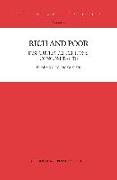The Valuation of Multivariate Options
BücherAngebote / Angebote:
Inhaltsangabe:Abstract:
During the last decades, capital markets have transformed rapidly. Derivative securities ¿ or more simply derivatives ¿ like swaps, futures, and options supplemented the trading of stocks and bonds. These financial products can frequently be seen in the media: Due to derivatives, Procter & Gamble lost $150 million in 1994, Barings Bank lost $1.3 billion in 1995 and Long-Term Capital Management (LTCM) lost $3.5 billion in 1998.
Though these figures seem daunting, derivatives can be useful financial instruments. Applications include risk management, speculation, reduced transaction costs, and regulatory arbitrage.
Theory and practice of option valuation were revolutionized in 1973, when Fischer Black and Myron Scholes published their celebrated Black Scholes formula in the landmark paper ¿The pricing of options and corporate liabilities¿. Afterwards, a vast amount of papers on option valuation was published which employ all kinds of stochastic processes. Thereby, the special features of financial return data are tried to be taken into account.
Advancing option valuation theory to options with multiple underlyings, lead to the problem that the dependence structure of the underlying securities needs to be considered. Though linear correlation is a widely used dependence measure, it may be inappropriate for multivariate return data. Throughout the last years, dependence modelling through copulas has become common.
Copulas are multivariate distributions on the d-dimensional unit-hyper-square which couples d marginal distributions to a joint distribution. Copulas can be used to construct dependence measures like the rank correlation coefficients of Spearman or Kendall. They are also a useful tool in the context of option valuation.
The prices of multivariate options depend on the distributional assumptions of stock price changes and the dependence structure. This thesis exhibits the features of multivariate financial return data. Evidence of (multi-)non-normality is presented. A general overview on multivariate option valuation theory is given. A nonparametric model and two Esscher models are introduced in detail. Then, the multivariate normal and the multivariate normal inverse Gaussian distribution are assumed as return distributions for an empirical study. The study exhibits the influence of the dependence structure and the properties of the assumed return distribution on option prices.
Inhaltsverzeichnis:Table of [...]
Folgt in ca. 10 Arbeitstagen

